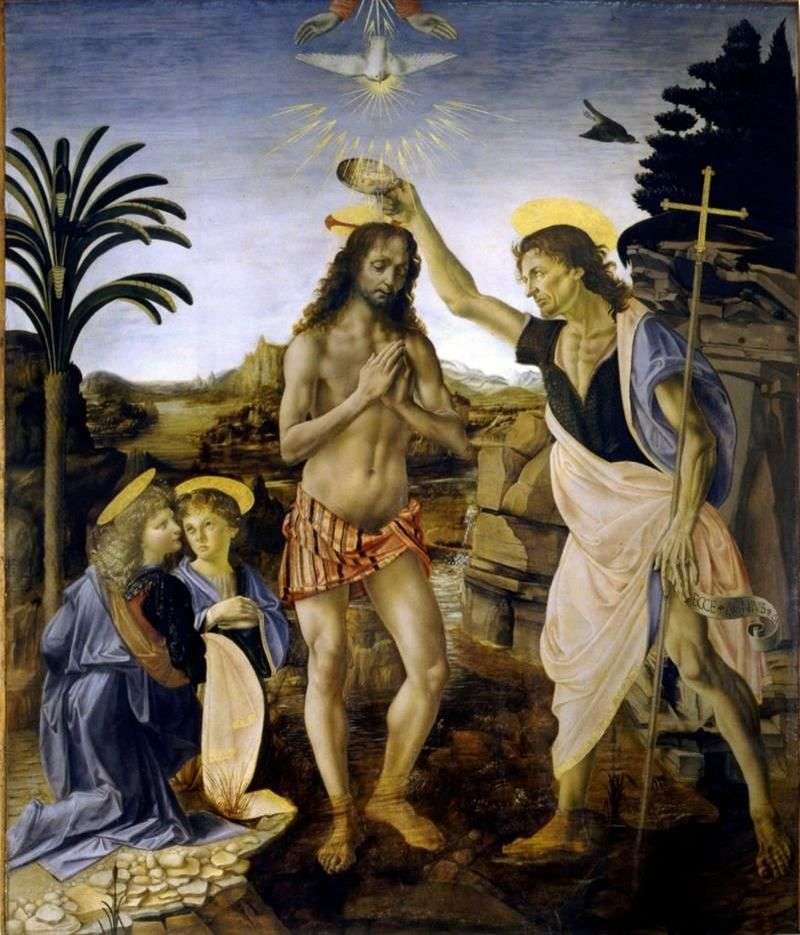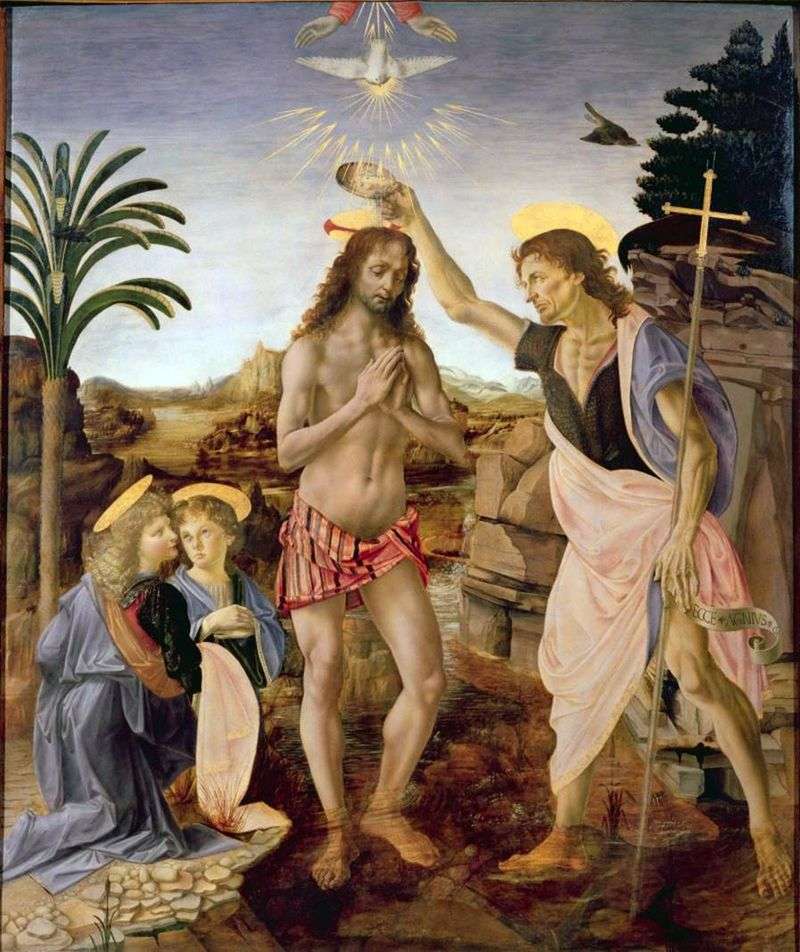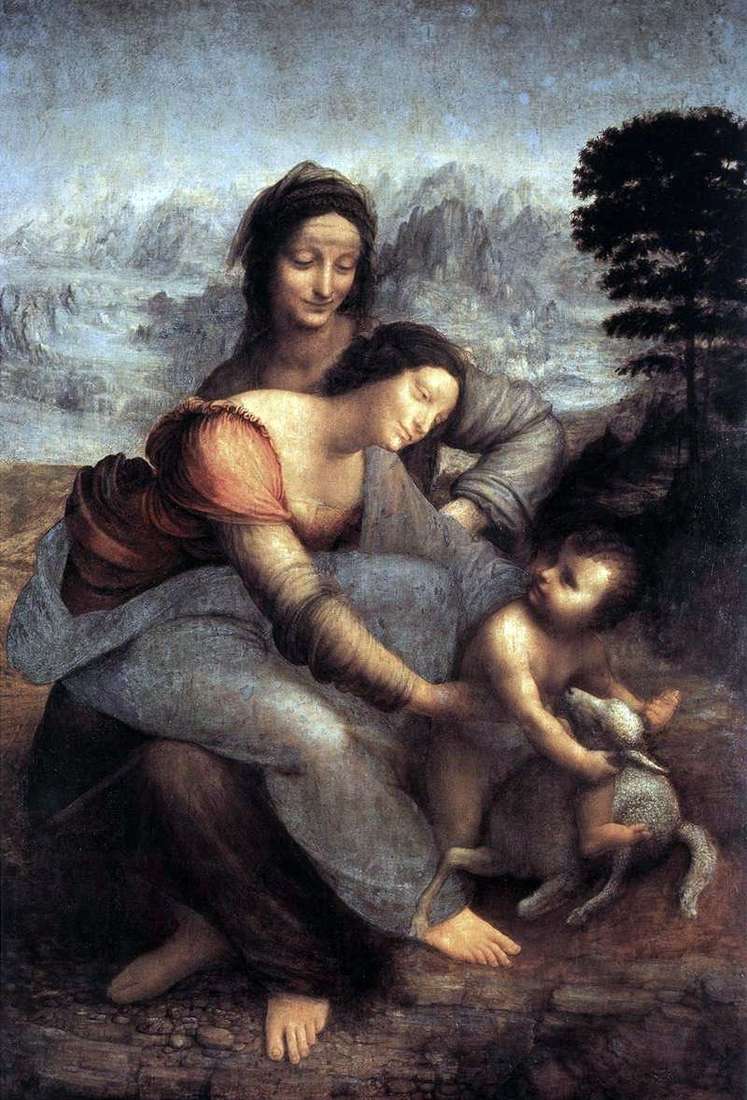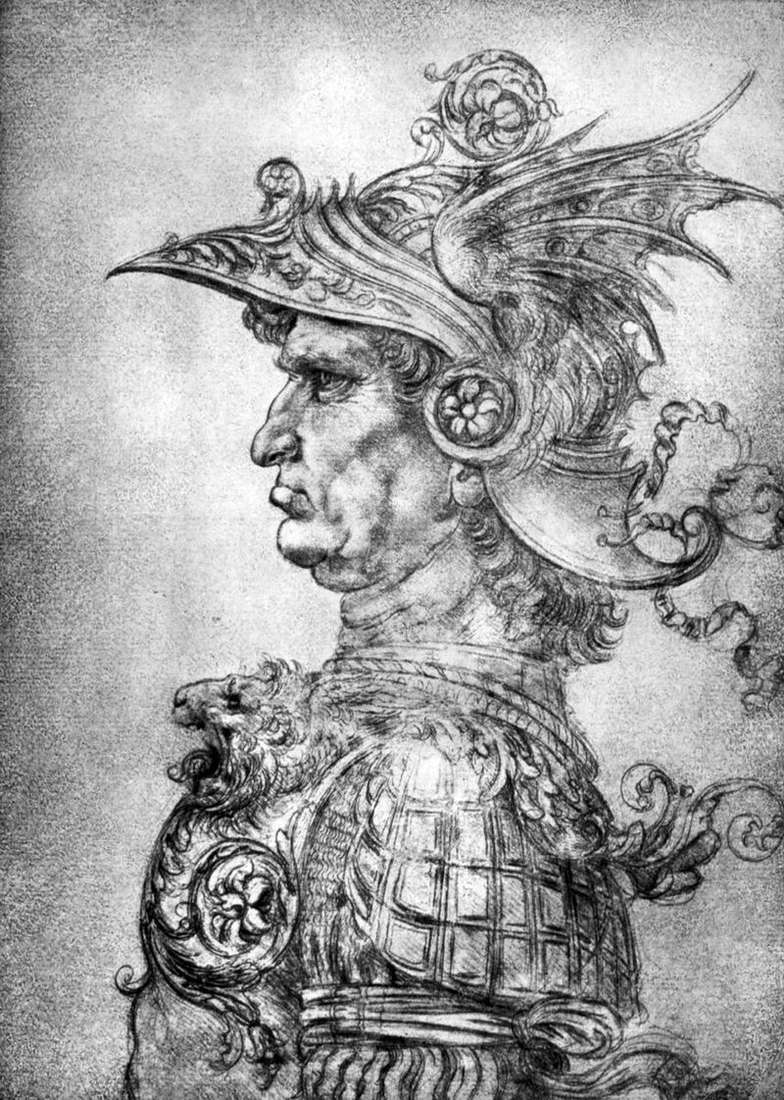
Da Vinci’s contribution to the creation of the altarpiece “The Baptism of Christ” stands out as an early indication of his artistic potential. By mastery he excels both colleagues and teachers, who always recognized the talent of his assistant.
The “Baptism of Christ”, written in 1470-1472 and 1475-1478, was ordered by the workshop of Verrocchio by the monks of the monastery of San Salvi in Florence. Perhaps it was meant for the church of Villambrouse.
This work combines the creative efforts of Verrocchio and Leonardo. The short description includes a record of “Leonardo’s Angel”. This is the extreme left angel, who kneels and half turns, looks at Christ. Could this image be a self-portrait of a master?
The elevated head of the angel directs the spectator’s eyes to the stage of Baptism. The angel holds in his hands the robes of Christ, ready to give it to Jesus when he comes out of the river. In the workshop it was accepted that the leading artist, in this case Verrocchio, draw the main figures – Jesus and John the Baptist – leaving the landscape and secondary figures to their talented students. It is assumed that the second angel, located closer to Christ, belongs to the brush of Sandro Botticelli. Based on similar stylistic features, part of the landscape can be attributed to the work of Vinci.
To the history of the creation of the work, Vasari refers an apocryphal record about the scene that occurred in the workshop of Verrocchio while working on this picture. Verrocchio left the workshop for a while, and on his return saw an amazing angel, whom Leonardo had time to portray. The teacher recognized the superiority of his pupil and swore to quit drawing. At the end of the work on this picture, Verrocchio did not stop drawing, but he began to pay more attention to sculpture.
Comparing this work with the bronze sculpture of Christ and St. Thomas, performed by Verrocchio for Orsanmikele, you can see some similarities. Carlo Pedretti in the book “Leonardo” noticed that the secondary figure of the angel is turned to the viewer’s back and performs the same function as the figure of St. Thomas: the viewer’s involvement in what is happening in the picture, so that he feels himself part of the Sacrament of Baptism. Pedretti emphasizes that the face of the angel of Leonardo’s work is classical beauty, his sophistication can compete with antique models.
In the era of Leonardo, the motif of the “Baptism of Christ” was widely distributed among public and private orders of images on biblical themes. One work stands out especially against this background – the “Baptism of Christ” brush by Piero della Francesca, kept in the London National Gallery. Before working professionally in painting, Piero della Francesca studied mathematics. His knowledge of this subject was also applied in the picture, which is marked by the accuracy of symmetrical proportions. The dove and the figure of Christ descending from heaven divide the canvas into two equal parts, and the clouds repeat the silhouette of the dove symbolizing the appearance of the Holy Spirit.
 The Baptism of Christ by Andrea del Verrocchio
The Baptism of Christ by Andrea del Verrocchio Annunciation by Leonardo Da Vinci
Annunciation by Leonardo Da Vinci Saint Anna and Mary with the Infant Christ by Leonardo Da Vinci
Saint Anna and Mary with the Infant Christ by Leonardo Da Vinci Bacchus by Leonardo Da Vinci
Bacchus by Leonardo Da Vinci Madonna with a carnation by Leonardo Da Vinci
Madonna with a carnation by Leonardo Da Vinci The Adoration of the Magi by Leonardo da Vinci
The Adoration of the Magi by Leonardo da Vinci Self-portrait by Leonardo Da Vinci
Self-portrait by Leonardo Da Vinci Warrior in helmet and armor by Leonardo da Vinci
Warrior in helmet and armor by Leonardo da Vinci